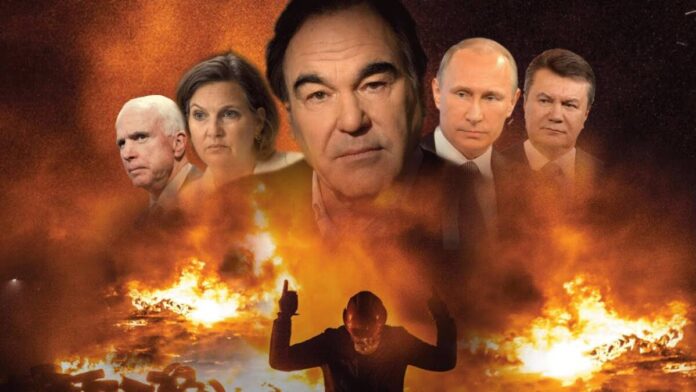Anyone who knows Oliver Stone knows that the American director has always accompanied an important documentary activity alongside fictional cinema. If his films are already evidently contaminated by the documentary element, in these experiences Stone is perfectly at ease, often going to make rather controversial documentaries. Ukraine on Fire is no exception.
The documentary directed by Igor Lopatonok, of which Stone is the producer (and evident animator), attempts to shed light on the recent history of Ukraine, starting from a historical basis up to the events between 2013 and 2014, which created a a situation of serious instability of which we are all well aware today.
Ukraine on Fire , released in 2016, is back in the limelight these days, and can be a useful tool to understand some of the mechanisms that led to the sad events of these days.
A documentary in full Oliver Stone style
A necessary premise is to be made. Stone’s film is strongly politically aligned, like virtually all of the American’s productions. Those who know his cinema already know of his anti-American positions that often come out of his works.
In fact, Ukraine on Fire tries to tell the events of Maidan and the subsequent Donbass crisis through a different lens than that of the mass media. An approach that, although not free from criticism, has the advantage of making us understand a lot about the recent history of the country.
Although many only became aware of the unstable situation in Ukraine today, the crisis has already been profound for several years. In fact, in 2014, the government chaired by Viktor Yanukovych (supported by the Kremlin) was dismissed.
The thesis that Stone (and the film in general) maintains is that behind these events, which have gone down in history as Euromaidan , were not animated only by ordinary citizens, but there are strong interference by Western states, USA above all.
During the film we find ourselves having to make critical choices several times, because it often presents us with the reverse side of the coin, that is, the events told from the unprecedented perspective of the “losers”.
It is up to us to decide what to believe or not , bearing in mind that most of what we will hear and see is decidedly biased and rather controversial.
The great value of Ukraine on Fire
However, there is a great merit of Ukraine on Fire if we go beyond its stance clearly against the narrative of the events so far (and in the light of today’s events in a decidedly difficult position to sustain ). In fact, the film manages to highlight a situation of crisis that has been going on for years and of which today’s war is only the last resort.
Stone shows a strongly divided country, repeatedly described on the verge of civil war. To the west a pro-European Ukraine, to the east the pro-Russian Ukraine, by now historically divided and different.
The Donbass situation arises precisely from this split. A vision apparently irreconcilable, with the two sides accusing each other. On the one hand, the West is seen as an incubator of nationalist and far-right forces, on which the film insists a lot. On the other, the East close to Putin as a traitor to the Ukrainian homeland.
The film contains several interesting interviews, always as long as you take them with due precautions and the right awareness.
Among the many stands out that of Vladimir Putin, who highlights his position on Ukraine, but also on the West, NATO and the USA. A very precious testimony, net of the judgment that can be drawn from it, to understand how we arrived at the current situation.
The Ukrainian instability has deep roots
The most interesting fact is to note how the current war derives from deeply rooted instabilities, even on a cultural level . In a Ukraine so divided and in an evident state of tension, the clash already seemed almost inevitable in those years.
The epilogue of Ukraine on Fire is in this sense more relevant than ever, showing the tensions between West and East (not only on Ukrainian territory), presenting what is an authentic Cold War climate.
The fear of nuclear power , which has become overwhelmingly current in recent days, seems in fact to be a never interrupted discourse to listen to some opinions.
This is the great quality of the film, which must be taken as a relevant document and as such critically analyzed by the viewer . It is up to us to decide what to believe and what not to, by evaluating the opinions and facts presented by the film and by the people interviewed.
But even if all this seems false, biased and on the wrong side, it remains an element of great interest, if only to understand the “reasons” that led to the sadly known facts of recent weeks.
Stone’s comment on the current situation
The documentary has obviously made a comeback in recent weeks and given the current developments of the crisis.
Stone, who also interviewed Putin in a film entirely dedicated to the Russian leader, said at first that he did not think Putin would wage war on Ukraine, then took a stand with a post on Facebook.
The director and producer obviously distances himself from Putin’s decision, highlighting how the wrongs (according to him) received cannot represent a reason for the aggression.
Stone then invoked dialogue, in the hope that we can reach a cooperation that has always been lost. Hope that, so far, seems to be quite far away, while tensions are getting stronger.

